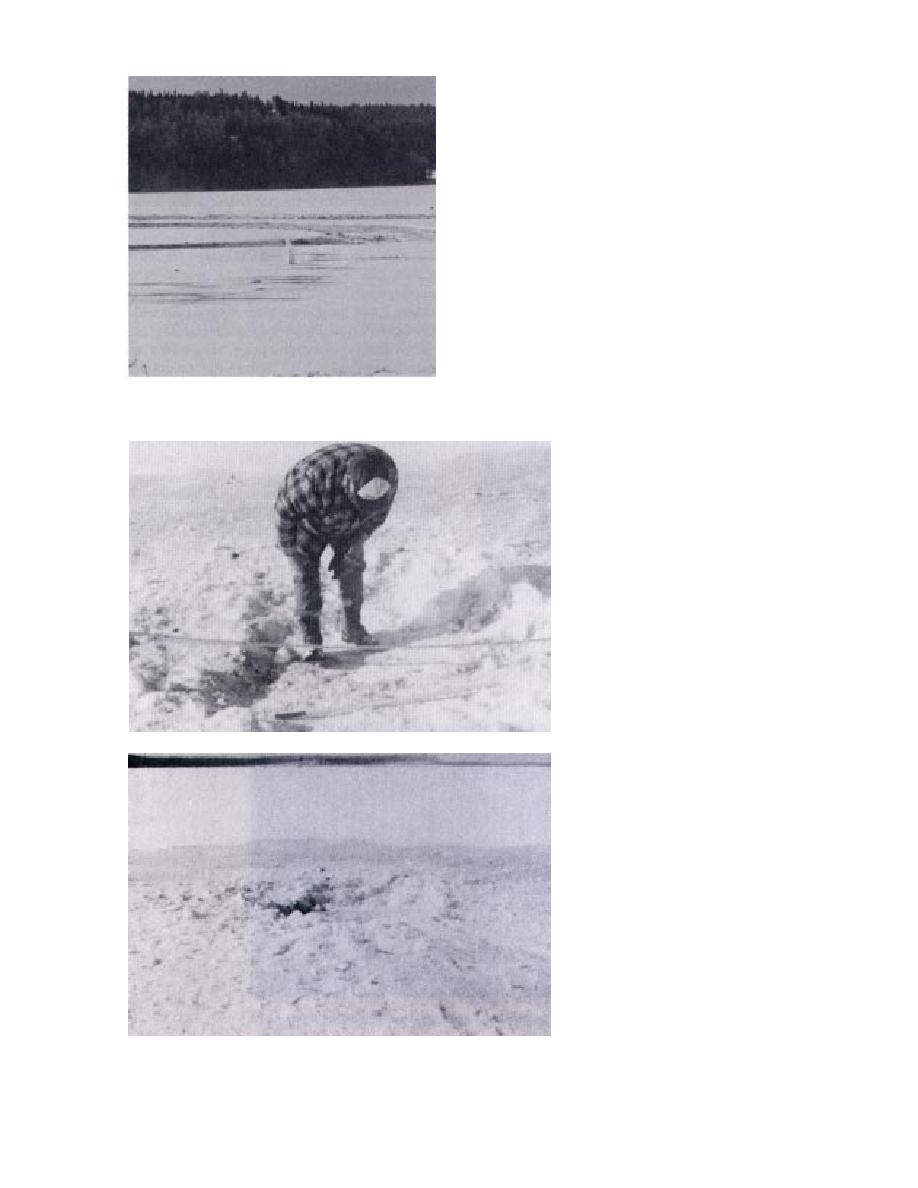
be expected to ricochet but would penetrate the
ice sheet before exploding, similar to the 81-mm
delay-fused mortar projectiles discussed below.
81-mm mortar test firing
Both point-detonating and delay-fused 81-mm
projectiles were fired during the test. Several of the
mortar projectiles fell in the river and were inacce-
ssible to us. We measured three craters formed by
point-detonating projectiles. These craters averaged
2.45 2.15 m in diameter (Table 3), and they were
more nearly circular than the howitzer craters,
probably because of the higher trajectory of the
mortar projectile. The mean apparent radius of the
craters was 1.15 m.
The mean depth of the craters was 0.16 m, with
most of the depth caused by removal of the 0.15-m-
thick snow cover. Ashallow depression was blown in
Figure 7. Ricocheting delay-fused projectile explod-
the underlying ice cover in the center of the craters,
ing high in the air.
Figure 8. Crater formed by a point-
detonating 81-mm mortar projectile
on grounded ice.
Figure 9. Crater formed by a point-
detonating 81-mm mortar projectile
on a floating ice sheet.
8



 Previous Page
Previous Page
